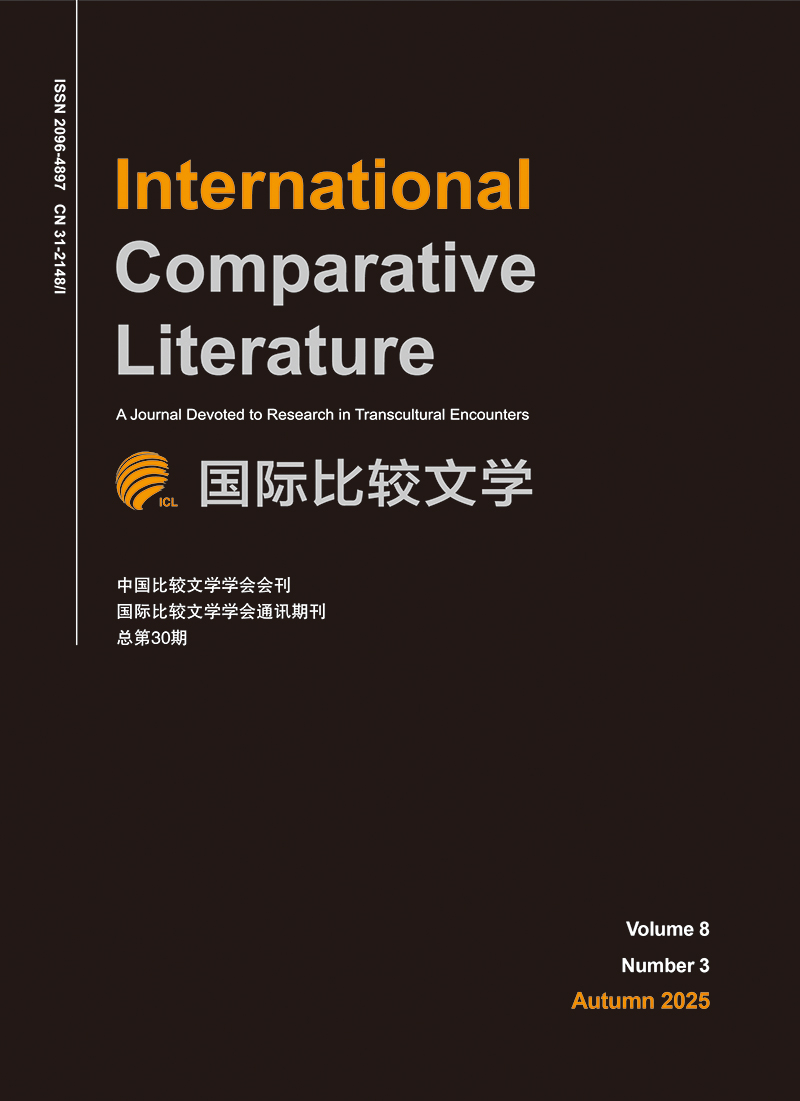“You Don't Mind the Play”: On the Sly Scenes in The Taming of the Shrew
-
摘要: 莎士比亚《驯悍记》的序幕(Prologue)结构非常奇特,在全部莎剧中堪称独一无二:首先,它由正剧前的两场表演外加第一幕第一场最后六行对话构成,因此毋宁说是一部“戏前戏”而非一般意义上的序幕;其次,它的两场序幕不是以单人致辞的形式向观众介绍剧情梗概,而是通过戏剧对话和舞台表演来引出《驯悍记》的正剧。事实上,《驯悍记》中斯赖的故事和正剧本身分布于不同的戏剧空间并承载了不同的戏剧功能:前者是后者的“戏前戏”,而后者是前者的“戏中戏”;斯赖的故事构成了戏剧的第一层幻象,而“驯悍的故事”则构成了它的第二层幻象。两层幻象互为镜像。莎士比亚让我们在《驯悍记》的“戏前戏”中看斯赖的戏剧(尽管他本人对此并无自觉),正如斯赖在它的“戏中戏”中看演员们演出的《驯悍记》。这一事实构成了《驯悍记》的莫比乌斯循环。我们就是斯赖,斯赖就是我们。在莎士比亚的《驯悍记》中,斯赖最终也没有从戏剧幻象中醒来。(只)是幻象吗?应该说(也)是现实:戏剧的幻象就是戏剧的现实,而在戏剧现实之外更无其他现实。Abstract: The Prologue of Shakespeare's The Taming of the Shrew is unique in its structure. Firstly, it consists of two scenes with the drunkard Christopher Sly before the play proper and the last six lines in Act I, Scene I; in this light it is a play before the play rather than a commonplace prologue. Secondly, the Sly scenes are in themselves a play performed on the stage rather than a routine speech narrated(usually by a Chorus or an actor, who is not necessarily a character of the play). In The Taming of the Shrew, therefore, the Sly scenes, i.e., the play before the play, and the play proper are situated at two different(though closely articulated) levels of the dramatic world and exert different dramatic functions: the former appears as the latter's play-before-the-play, while the latter as the former's play-within-the-play.Seen from the spectator-reader's perspective, the prologue(Sly's story) constitutes the first layer of dramatic illusion, whereas the Shrew's story provides the second.These two dramatic illusions are mirrors reflecting each other: Shakespeare has us watch Sly in the Sly scenes, just as Sly himself watches other players playing The Taming of the Shrew as the play-within-the-play. We watch Sly watch, and Sly being watched in the play represents us watching him watch on the stage: this creates a perfect Mobius strip of The Taming of the Shrew as a whole. Sly does not“mind the play,” nor does he have a rude awakening from the illusion at the end of the play. Here Shakespeare cunningly reveals the truth of life and practically forestalls the underlying modern metaphysical illusion of the Other World.
-
Key words:
- Shakespeare /
- The Taming of the Shrew /
- prologue /
- play within the play /
- illusion
-
[1] A nonymous.A Pleasant Conceited Historie, called The taming of a Shrew.Printed at London by Peter Short, 1594. [2] Bloom, Allan David.Love and Friendship.New York City:Simon&Schuster, 1993. [3] B loom, Harold.The Anatomy of Influence:Literature as a Way of Life.New Haven:Yale University Press, 2012. [4] ——.Shakespeare:The Invention of the Human.New York:Penguin Group, Inc., 1998. [5] Boethius.Theological Tractates.The Consolation of Philosophy.Translated by H.F.Stewart and E.K.Rand.Cambridge:Harvard University, 1973. [6] Cervantes, Miguel de.Don Quixote.Translated by Charles Jarvis.Oxford:Oxford University Press, 2008. [7] Cunliffe, John W., ed.Supposes and Jocasta.Boston and London:D.C.Heath&co., 1906. [8] Garber, Marjorie.Shakespeare After All.New York City:Pantheon Books, 2004. [9] Gilbert, Allan H., ed.Literary Criticism:Plato to Dryden.Detroit:Wayne State University Press, 1962. [10] Goddard, Harold C.The Meaning of Shakespeare.Chicago:University of Chicago Press, 1951. [11] Mack, Robert L., ed.Arabian Nights' Entertainments.Oxford:Oxford University Press, 1995. [12] Marrapodi, Michele, ed.Shakespeare and the Italian Renaissance:Appropriation, Transformation, Opposition.London&New York:Routledge, 2014. [13] Taleb, Fahd Mohammed, and Saeed Al-Olaqi. "The Influence of the Arabian Nights on English Literature:A Selective Study." European Journal of Social Sciences 31, no.3(2012):384-86. [14] (德)尼采:《人性的, 太人性的》, 杨恒达译, 北京:中国人民大学出版社, 2019年。[Nietzsche.Renxingde, tairenxingde(Human, All Too Human:A Book For Free Spirits).Translated by YANG Hengda.Beijing:China Renmin University Press, 2019.] -

 点击查看大图
点击查看大图
计量
- 文章访问数: 523
- HTML全文浏览量: 66
- PDF下载量: 31
- 被引次数: 0



 下载:
下载:

